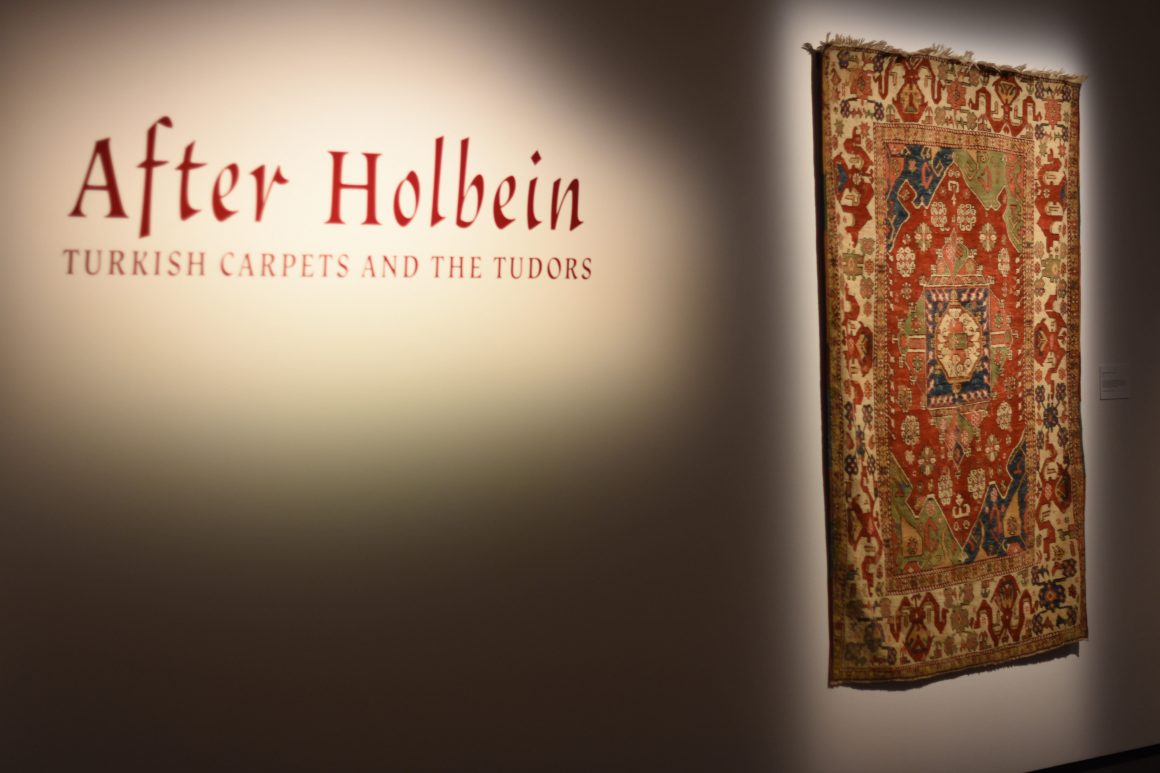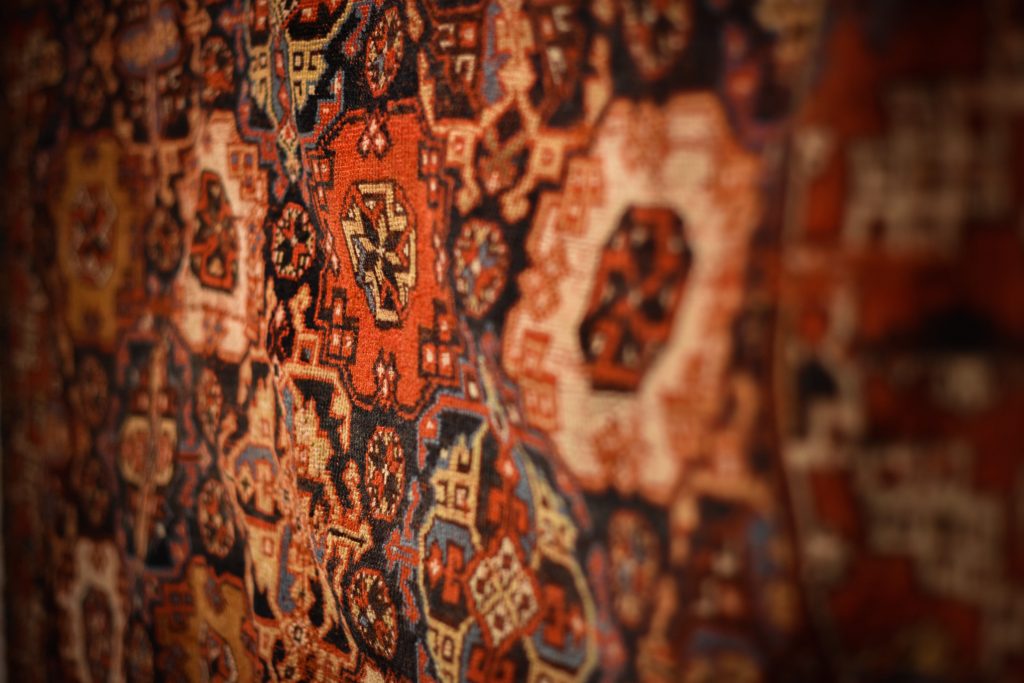
Exhibition review: After Holbein: Turkish Carpets and the Tudors at the Nickle Galleries
By Rustam Gambarov, April 19 2023—
The Nickle Galleries proudly presents an exhibition that delves into the intriguing intersection of art and power featuring a remarkable collection of carpets akin to those depicted by the esteemed 16th-century artist, Hans Holbein. Born in Germany, Holbein ventured to England in 1526, where his exceptional talent for portraiture secured him a position as King Henry VIII’s official painter in 1536.
Holbein was prolific in his portraits, capturing numerous influential figures of the time including the British nobility, affluent merchants, scholars, religious leaders and members of the royal family. Among his most significant works is the 1537 Mural Portrait of the Tudor Dynasty, which portrayed Henry VIII, his late parents and Queen Jane Seymour. The original masterpiece, filled with symbolism and allegory, was sadly lost in a 1698 fire. A prominent feature in the painting was a striking carpet from Western Anatolia, a motif Holbein would incorporate repeatedly in his artwork.
Asian carpets became an object of fascination for European artists in the early 14th century, with notable examples found in the works of Sienese artists Ambrogio Lorenzetti and Lippo Memmi. The allure of these luxurious textiles extended to northern Europe in the 16th century, where they were often depicted on tables, cupboards and window seats as a symbol of their owners’ affluence and taste. Only the wealthiest and most powerful would dare to use them on the floor.
In the 16th century, exquisite hand-woven pile carpets from Asia were rare in England, with their arrival attributed to the entrepreneurial efforts of Cardinal Wolsey, who acquired them from Venetian merchants. His impressive collection, numbering 230 carpets, was ultimately confiscated by the King when Wolsey lost favour in 1529. Henry VIII’s own collection boasted over 800 carpets, which were likely distributed across his 55 palaces. The current whereabouts of these carpets remain a mystery.

The 1837 portrait of Henry VIII, derived from Holbein’s original Mural Portrait of the Tudor Dynasty and created by an anonymous artist is particularly noteworthy. The painting captures Henry VIII standing on a luxurious Turkish carpet, the Star Ushak from Western Anatolia — a design familiar to Holbein. The carpet serves to enhance the King’s aura of strength, vitality and authority.
One of the exhibition’s highlights is an 18th-century four-lobed Medallion Uşak carpet fragment from Turkey, which bears striking similarities to the carpet in Holbein’s Mural Portrait of the Tudor Dynasty and subsequent reproductions. Woven in the town of Uşak, these distinctively patterned carpets have been produced in the region since the 15th century, and their unique, seemingly infinite designs characterize their beauty. The Four-lobed Medallion Uşak, part of the Jean and Marie Erikson Collection, offers visitors an exceptional opportunity to examine the exquisite craftsmanship and historical significance of these rare carpets.
The After Holbein: Turkish Carpets and the Tudors exhibition at Nickle Galleries offers a captivating exploration of the intertwining worlds of art, politics and prestige through the lens of Holbein’s masterful portraiture and the opulent carpets that graced the homes of the elite. This unique exhibition is not to be missed and is on display until the end of the week.
